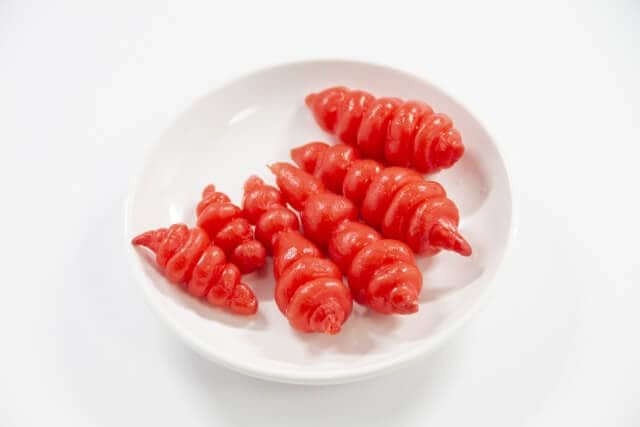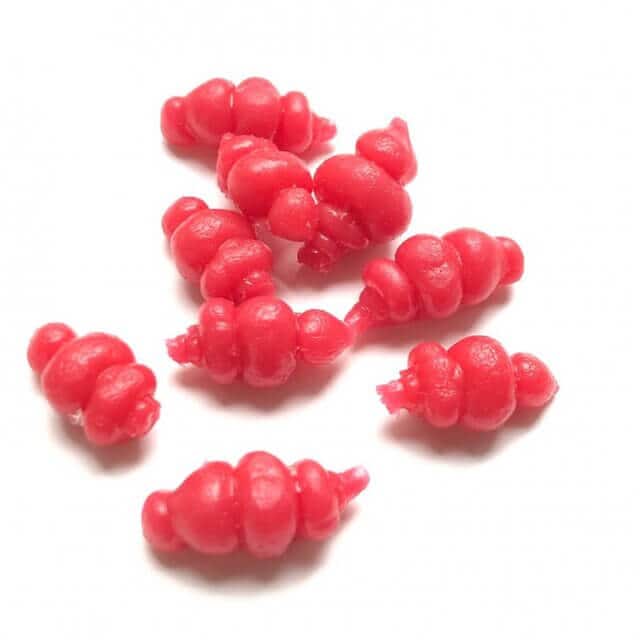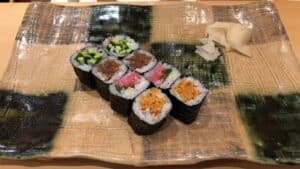Introduction to Chorogi
After the celebration of Christmas, New Year is coming! Everyone looks forward to the new year being the year of healing, blessings, and success. And so, this article including Tadukuri, Kuromame, Ichigoni, Datemaki, and Toshikoshi Soba will be your guide to Japanese New Years’ foods. Chinese artichoke or Chorogi in Japan is a rhizome or a root vegetable that locals eat raw, pickled, dried, or cooked.
Etymology

In addition, there are two theories about the origin of the name of Chorogi. There is a theory that the Chinese word “choronegi” was read in Japanese and a theory that the Korean word “choroni”, which means earthworm, was changed. The rhizome of the Chinese artichoke has many knots and resembles earthworms because of its long appearance, so they called it “Jeonglongyi” in Korea.
What is Chorogi?

Chorogi is a type of perilla native to China shaped like a slender spiral shell and, like lotus root and ginger, feeds on tubers at the tips of roots in the soil. Red chorogi pickled in red sweet vinegar is often available, but freshly harvested features a pure white surface. In New Year dishes, it is common to salt or boil the tubers of Chinese artichoke, then soak them in umezu or perilla vinegar and add red color to them. It has a crispy texture and refreshing taste. In addition to pickling it in vinegar, Japanese eat this as tempura, and when fried, it has a chewy texture like potatoes. This Chinese artichoke is also suitable for home gardens.
History of Chorogi

As the name suggests, Chinese artichokes or crosne (Stachys affinis) came originally from Chinese uplands. From there, its cultivation spread to India and Japan, where it became very popular. Furthermore, in France, the first recorded instance of Stachys affinis cultivated is in the village of Crosne near Paris towards the end of the 19th century – which explains one of the vegetable’s other names.
Chorogi Recipe

Chorogi Ingredients
| The Chorogi Ingredients for 4 person | |
| Chinese artichoke | 2000g |
| salt | 500g |
| sugar | 500g |
| vinegar | 100g |
| Shiso leaf | 20g |
How to Make Chorogi?
Wash the chorogi well and remove the soil completely.
Soak in a certain amount of salt.
Soak chorogi in running water for about a day and night and salt it out.
Knead the shiso leaves with strength, put out the lye, and add the amount of vinegar and sugar.
When a beautiful purple color comes out, add chorogi and soak for 1 month.
How to make pickled chorogi in plum vinegar?
Put freshly boiled Chinese artichoke in a bottle that has been sterilized by boiling.
Add plum vinegar and brown sugar on top of it. Cover the jar and shake so that the heat of the Chinese artichoke melts the brown sugar.
Completed after 2-3 days
How to make miso-zuke chorogi?
Put miso and mirin in a closed container and mix. Then, put the prepared Chinese artichoke there.
Completed in the refrigerator for about 3 days
How to make stir-fried chorogi
Put butter in a frying pan and melt over low heat. Fry bacon and shimeji mushrooms cut into pieces that are easy to eat.
When it’s cooked, add the prepared Chinese artichoke.
Mix the whole quickly and complete
What is the meaning of Chorogi?

Each of the ingredients in New Year’s dishes has a congratulatory meaning and saying. You can enjoy osechi dishes more by eating while knowing the wishes put into the dishes. Chinese artichoke is in Chinese characters as “Elder Ki” or “Elder Takashi”. The kanji is auspicious for longevity and they used as an ingredient in New Year dishes. Chorogi is often serve with black beans, but the wish to “work healthy and diligently” is included by combining black beans that mean to work diligently, and chorogi that wish for longevity.
What is the season of Chorogi?

The harvest time of Chinese artichoke is from November to January, which is the season, and in winter, which coincides with the time of New Year dishes. Additionally, locals made this all over the country, and its main production areas include Oita, Hiroshima, Okayama, Iwate, Fukushima, and Akita prefectures. Since the Chinese artichoke is delicate, the harvest must be done manually, and the number of farmers cultivating it has decreased due to the time and effort required.
How does Chorogi taste like?

Chorogi looks like a fruit, but it is a part of the enlarged stem called “tuber”, which is dug out of the soil and harvested. Raw Chinese artichoke has a crispy texture with no pungent or bitter taste, and you can feel a little bit of harshness. You can enjoy the texture and taste of sweet and sour sauce pickled Chinese artichoke. In addition, the heated Chinese artichoke has a chewy, potato-like texture. It is as a lily root-like taste, and there are not many habits, so it is also attractive to enjoy it with your favorite seasoning.
How to eat chorogi?

Chinese artichoke is an ingredient that locals used in a wide range of situations. In Japan, they processed the Chinese artichoke into pickles such as they pickled it in a plum vinegar suitable for snacks. And, in miso-zuke is also a popular way to eat it. The fragrant miso-flavored Chinese artichoke is a companion to rice. However, in Europe, it is for stir-fried foods and salads.
Nutritional Benefits of Chorogi

Chorogi is an edible tuber grown in China and Japan and is rich in protein, carbohydrates, iron, and vitamins. It is effective as a sedative or anti-anxiety drug. It can also reduce plasma glucose levels and limit the growth of harmful bacteria.
Recommended Chorogi Restaurants
Ouminoyakata

The chorogi itself has almost no taste and has a unique texture and texture. The owner of the shop made it into pickles, spicy sauces, soups, etc., and the pickles dyed in crimson are indispensable for osechi dishes along with kwai and black beans as a lucky charm.
Taketa Wakaba

In Taketa City, chorogi is one of their special products and you can buy them here, ready-to-eat. It used to be cultivated all over the country, but now it is cultivated nationwide, and it has not changed from about 300 years ago in Taketa City, and it is still widely cultivated all over the city.
Chorogimura

Chorogimura is a medicinal food restaurant that is a shop in Chorogi Village. The Chorogi village itself is in the mountains, so it’s not a place to stop by, but it’s a pretty hidden spot in this Chorogi village. It is like a campsite, with cottages and a very clean toilet. The plants used for shiso and medicinal food grow on the premises.
Online Shop (Amazon and Rakuten)

In addition to Amazon and Rakuten, you can purchase chorogi online if you want it very convenient and easy. Where the Chinese artichoke are sold; Amazon, Rakuten, convenience store, Supermarket, the 100-yen shop, and Don Quijote. Internet shops such as Amazon and Rakuten can get Chinese artichokes as soon as tomorrow.
Conclusion

Many people may have eaten chorogi as New Year’s dishes in Japan. You may be surprised at the strange shape, but it’s delicious when you try it. It goes well with curry and rice as incense. In addition, you can add pickled green fish and vegetables to your greased salad and it will taste good. Chorogi’s flower language is “surprise and enjoyable life”. It’s a lucky flower language. The cultivation method is also relatively simple. If you’re interested in it, please try it.
















Comments